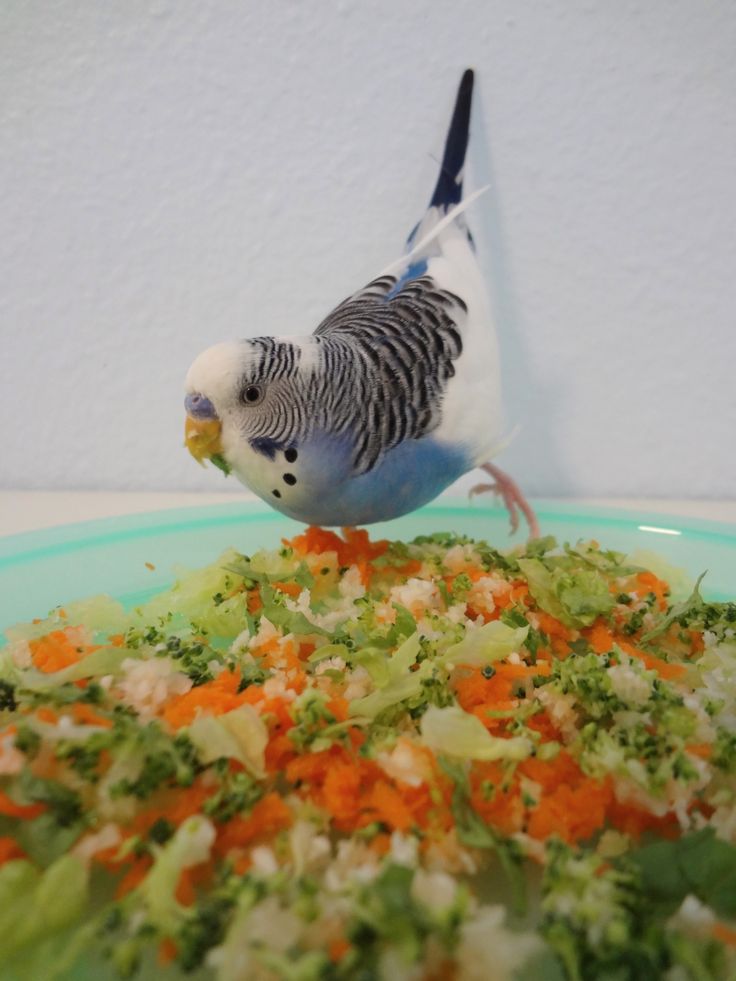Getting babies to sleep through the night without feeding
8 Solutions to Get Your Baby to Sleep Through the Night
Getting your baby back to sleep through the night is a common challenge among parents. As a newborn, babies need to wake every few hours to feed since their tiny tummies aren’t big enough to keep them full throughout the night. However, as your baby grows they need those nighttime feedings less. This is usually when parents expect their babies to start sleeping through the night, but things don’t always turn out as expected, leaving parents utterly exhausted and searching for solutions.
In This ArticleIntroduction
How to get your baby to sleep through the night?
Establish a bedtime routine
Teach your baby to self-soothe
Start weaning the night feedings
Follow a schedule
Keep a calming ambiance
Stick to an appropriate bedtime
Be patient
Check out our sleep tips!
Common Questions from New Parents
The answer to the age old question when do babies start sleeping through the night is less straightforward than parents expect. Believe it or not, sleep is actually a learned skill. Babies need to learn how and when to sleep before sleeping through the night. Once they're ready, our 8 tips will help your little one start sleeping for those longer stretches.
To understand how to get your baby to sleep through the night, you first need to know if your baby isable to sleep through the night. |
You can also help set the stage for a good night's sleep by making sure your baby is cultivating good sleep habits during the day, which will help them sleep better during the night too.
Your baby has to be able to sleep through the night before they can! There are a few milestones they need to reach first, like a decrease in Moro Reflex. Check out our article on When Do Babies Sleep Through the Night to learn if your baby is ready/able to sleep through the night.
If your baby is capable of sleeping through the night but still struggling, there might be an underlying reason your baby isn’t sleeping through the night – OR they’re right on the cusp of starting to sleep through the night. There are several reasons that can cause your baby not to sleep through the night, including sleep regressions, a growth spurt or illness, or the inability to fall asleep independently.
Make nighttime conditions in your baby's bedroom consistent. If they wake up in the middle of the night, the sounds and lights in the room should be the same as when they fell asleep. If you need to feed or change your baby during the night, keep the lights low and the talking to a minimum. Too much stimulation can make it hard for them to settle again. - Webmd.
Whether your baby is experiencing one of the problems above, or they’ve just surpassed the milestones to be able to sleep at night, there are ways you can help your baby (and yourself!) sleep through the night.
Here’s how to get baby to sleep through the night:
1. Establish a bedtime routine.It’s never too early to get a bedtime routine started. Your bedtime routine should be simple and sustainable, so it’s easy for you to do every night. Even the smallest change in your baby’s routine can leave them feeling off, and suddenly waking more frequently at night. Include calming, soothing activities that your baby seems to respond to, like swaddling and shushing. The bedtime routine can be where you create positive sleep associations for your baby.
2. Teach your baby to self-soothe, which means trying your best to soothe them less.When your baby wakes in the middle of the night and cries for you, it’s always okay to go check on them. However, try and limit your time in there with them. Make it clear that it’s still time to sleep, not play or eat. Place your hand on their chest for a few moments to calm them, then leave the room (making sure to place your baby on their back to avoid sudden infant death syndrome).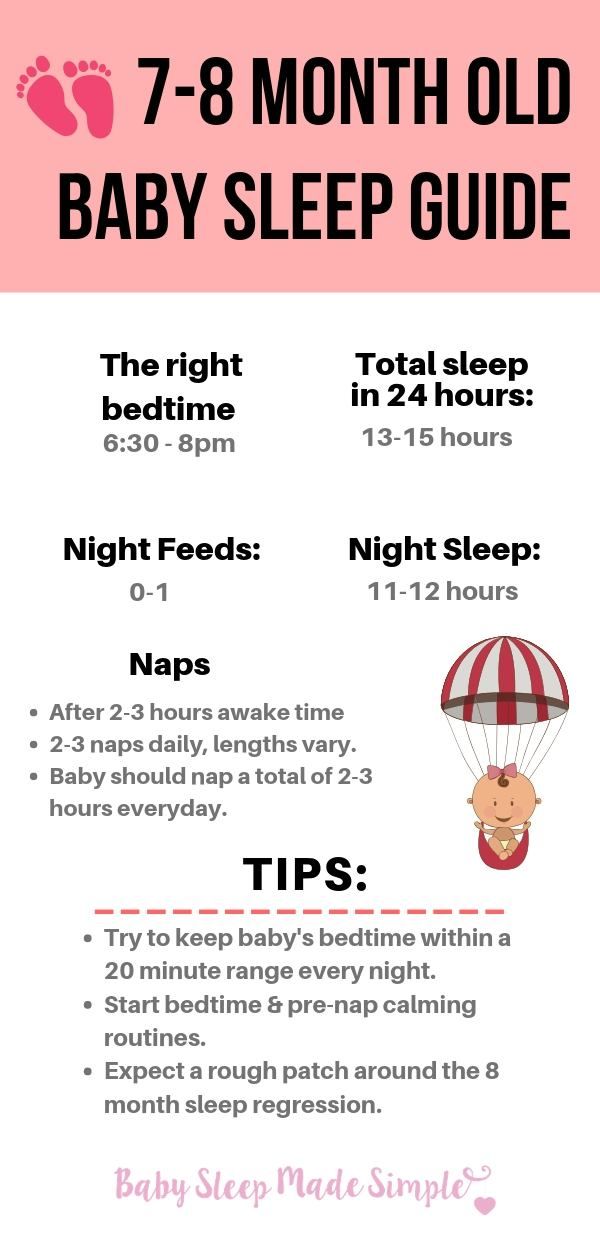 The Zen Swaddle and Zen Sack are gently weighted on the chest and sides, which make your baby feel like you’re still there. This can help ease separation anxiety, break the sleep association to be held to fall back asleep, and help your baby learn to self-soothe.
The Zen Swaddle and Zen Sack are gently weighted on the chest and sides, which make your baby feel like you’re still there. This can help ease separation anxiety, break the sleep association to be held to fall back asleep, and help your baby learn to self-soothe.
| Sweeter Sleep Story “My 8 week old daughter loves her Zen Sack. Once it's nap and bedtime, I turn on the sound machine and put her in it and it's like it gives her instant comfort and she knows it's sleep time. She is warm and secure and sleeps longer stretches because of it!" - Cheryl L., 10/18/2017 Shop Zen Sacks |
3. Start weaning the night feedings.
Once you get the okay from your doctor to stop night feedings, you should slowly start to reduce them. In many cases, feeding becomes a sleep association because you fed your baby every time they woke up. Just because that’s no longer necessary, doesn’t mean your baby won’t want it anymore. Slowly wean them off the night feedings (maybe try a dream feed?), feeding them less and not as frequently over a few days or a week to get them used to not feeding every time they wake.
Just because that’s no longer necessary, doesn’t mean your baby won’t want it anymore. Slowly wean them off the night feedings (maybe try a dream feed?), feeding them less and not as frequently over a few days or a week to get them used to not feeding every time they wake.
Make sure your baby is getting the right amount of daytime sleep to prepare them to get the right amount of nighttime sleep. As newborns, babies can’t differentiate between day and night, they just sleep ‘round the clock. As they get older, they start sleeping longer periods, the longest stretches being at night. If they're sleeping too much during the day they won’t stay asleep as long at night. Take a look at our sample newborn sleep schedules for some suggested guidelines.
5. Keep a calming ambiance.
Ambiance can be everything! Keep the room at a comfortable temperature, make sure it stays dark, and even try adding some white noise in there! The softest of sounds can disturb your baby at night, the white noise will provide a consistent, soothing sound for them to fall asleep to, and it will drown out any other noises happening around the house.
Putting your baby to sleep later in the hopes that they’ll sleep later in the morning most likely won’t work. If you’re following a schedule, it’s important to keep a regular bedtime for your little one to keep them on track and to help your baby sleep at more appropriate times. Remember, newborns don’t have a set bedtime, because they’re just sleeping whenever they need to. But around 3 months old, you can start to establish a healthy bedtime to accompany your sleep schedule.
7. Be patient.If your baby was sleeping through the night on their own before, and suddenly stopped, it might be a sleep regression or growth spurt’s fault. Growth spurts usually only last a few days, and then your baby should return to normal patterns and be able to sleep for hours at a time. Baby sleep regressions, including the infamous 4 months sleep regression, usually last 1-4 weeks. Be patient during times like this and focus on the fact that it won’t last.
In Baby Sleep Simplified you'll find sample schedules for every age through the first year, as well as tips on what you should focus on during every sleep stage to help your baby become a good sleeper. You can also check out our 7 Tips and Tricks on How to Get Your Newborn to Sleep or our 7 Highly Effective Sleep Tips.
How to Get my Baby to Sleep at night with sleep trainingThere are many methods of sleep training, and different methods work for different families. If you’ve been patient and have tried these tips and tricks but are still struggling with your baby's sleep, sleep training might be an option to consider. The Cry-It-Out (CIO) method, No Cry Method, and the Controlled Crying method are all common approaches to sleep training. Ultimately, which method you use should be a decision made by you and your family. Sleep consultants are great resources if you’re unsure of what method to use or just want to learn more about sleep training in general.
Use these tips if you’re having trouble getting baby to fall asleep. And remember, the Zen Swaddle and Zen Sack are effective tools for helping babies sleep better and longer – and they could be the key to teaching your little one to self-soothe!
Zen Sleepwear™: the perfect solution to get babysleeping through the night! Shop Zen Sleepwear |
Other Sleep Resources
Zerotothree.Org: Getting Baby to Sleep
American Academy of Pediatrics: Sleepless Nights
Centers for Disease Control and Prevention: Helping Babies Sleep Safely
Common questions from new parents-
How to get a 6-month-old to sleep through the night?
To get a 6-month-old to sleep through the night, you should implement a schedule and establish a good bedtime routine.
 This will help your little one to naturally feel tired at bedtime and get used to sleeping for hours at a time.
This will help your little one to naturally feel tired at bedtime and get used to sleeping for hours at a time.
-
Baby won't sleep through the night, what to do?
If your baby won't sleep at night, you should first make sure that they are getting enough sleep during the day to make up for their lack of nighttime sleep- putting an overtired baby to bed can be incredibly tricky! You should then look at your baby's bedtime routine and make adjustments. If your baby responds well to these adjustments, keep the routine going until they begin to sleep through the night.
-
Why doesn't a baby sleep at night?
Baby's do not have a sense of night and day so will sleep whenever they feel tired. For some babies, this will mean that they do not sleep naturally at night.
 A baby's timing systems for a 24 hour day are not fully formed at birth and will not be functioning until around 6 months old.
A baby's timing systems for a 24 hour day are not fully formed at birth and will not be functioning until around 6 months old.
-
How to get baby to sleep longer?
If your baby is not sleeping for long during the night, try cutting out nap times during the day.You should also try to establish a clear bedtime routine that will help your baby to develop natural sleep/wake cues.
-
When do babies start sleeping longer at night?
As babies start to get older, they will naturally start to sleep less during the day but for longer periods at night. Most mothers will notice these changes around the age of 12 months, by which your baby should be sleeping for 11-14 hours every 24 hours. You may notice longer night time sleeps from the age of 6 months.

-
Sleep Training Q +A with Taking Cara Babies
- When do babies sleep through the night
-
Sleep Training Guide: How to sleep train & when to start sleep training
-
Your baby's nap schedule: how to nail it!
- 6 months sleep regression: 5 common myths debunked
How long should a baby sleep at night without eating?
Photo credit: iStock.com / AleksandarNakic
Most babies are able to sleep through the night – or sleep for at least six hours without waking up to eat – sometime between 3 to 6 months of age. Healthy babies who are born full-term are generally able to sleep through the night without a feeding starting at 3 months of age or when they weigh 12 to 13 pounds. However, babies' sleep cycles only become consistent and predictable around the time they're 6 months old.
Just because babies are technically able to go through the night without a feeding, however, doesn't mean they will. Night wakings can happen for many other reasons, including separation anxiety, an inability to self-soothe back to sleep, sleep regressions, teething, and bed-sharing.
Night wakings can happen for many other reasons, including separation anxiety, an inability to self-soothe back to sleep, sleep regressions, teething, and bed-sharing.
If your baby doesn't start sleeping through the night without a feeding between 4 to 6 months of age, you can try night weaning. There are lots of different sleep training methods, from the cry-it-out method to the fading method. Learn about your options and choose one that feels right for you and your baby.
How long should a newborn sleep at night without eating?
Newborns generally sleep for two to three hours before waking to eat, day and night. As they get older, babies are usually able to sleep for increasingly longer stretches of time at night without waking to eat.
Between the age of 2 to 3 months old, healthy babies are often able to sleep for six hours without feeding. Research suggests that about half of babies are able to sleep at least six hours without a nighttime feed by 3 months of age. That rate rises to 62 percent by 6 months of age and 72 percent by 12 months of age, according to the National Sleep Foundation.
That rate rises to 62 percent by 6 months of age and 72 percent by 12 months of age, according to the National Sleep Foundation.
So how can you prepare your baby to sleep longer periods at night without eating? Start healthy sleep habits early. Help your newborn learn to fall asleep on their own by following a bedtime routine, putting them to bed when they're sleepy but still awake, and waiting for a few minutes to respond to their fussing when they do wake at night. Although your baby may still need to be fed during the night for some time, these tactics help them learn to nod back off without the help of your breast, arms, or a bottle.
If your baby was premature or has other health considerations such as digestive problems or failure to gain weight, be sure to discuss their feeding schedule with their doctor before making changes.
Should you wake a sleeping baby to feed?
For the first one to two weeks of life – or until your newborn regains the weight they lost after birth – it's important that they wake up to eat about every two to three hours. Newborns usually do this on their own, but occasionally will sleep for longer. If your baby does sleep for a stretch of more than four hours during this period, wake them to eat.
Newborns usually do this on their own, but occasionally will sleep for longer. If your baby does sleep for a stretch of more than four hours during this period, wake them to eat.
After the first couple of weeks, when babies surpass their birth weight, most healthy babies don't need to be woken to eat as long as they're growing and feeding well. That means they're gaining weight as expected and producing at least four wet diapers and three poopy diapers per day. Talk to your doctor if you're concerned about your baby's growth or feeding habits.
What if my baby won't wake up to eat?
If your baby is healthy, has passed their birth weight, and is feeding and growing steadily, you usually don't need to wake them to feed. Unless their doctor tells you otherwise, let your baby sleep – they'll let you know when they need to eat!
If, however, your baby hasn't yet surpassed their birth weight, or if they were premature or aren't growing as expected, you do need to rouse them to eat anytime they sleep for more than four hours straight.
Know that newborns sometimes have a hard time waking up to eat for the first few days, especially if:
- they're small
- they have jaundice
- you had a difficult labor
- you had an epidural or other pain reliever during birth
If your baby is lethargic and uninterested in eating, these tips can help a groggy baby wake to feed:
- Look for signs that they're in a light sleep cycle, which include flutters under closed eyelids, arm and leg movements, and sucking movements.
- Be sure the room is cool (around 18 C or 65 F) and your baby isn't overdressed, since being too warm makes babies sleepier.
- Try skin-to-skin contact and/or a laid-back breastfeeding position, which can encourage feeding.
Premature babies have unique nutritional needs and may not show hunger signs like crying.
If your baby is premature, or if you're concerned about your baby's weight gain or feeding patterns, talk to their doctor about how to ensure your baby is getting enough to eat.
Sources
BabyCenter's editorial team is committed to providing the most helpful and trustworthy pregnancy and parenting information in the world. When creating and updating content, we rely on credible sources: respected health organizations, professional groups of doctors and other experts, and published studies in peer-reviewed journals. We believe you should always know the source of the information you're seeing. Learn more about our editorial and medical review policies.
American Academy of Pediatrics. 2013. Sleeping through the night. https://www.healthychildren.org/English/ages-stages/baby/sleep/Pages/Sleeping-Through-the-Night.aspx [Accessed May 2022]
American Academy of Pediatrics. 2016. Failure to thrive. https://www.healthychildren.org/English/health-issues/conditions/Glands-Growth-Disorders/Pages/Failure-to-Thrive.aspx [Accessed May 2022]
American Academy of Pediatrics. 2018. Getting your baby to sleep. https://www.healthychildren.org/English/ages-stages/baby/sleep/pages/Getting-Your-Baby-to-Sleep. aspx [Accessed May 2022]
aspx [Accessed May 2022]
American Academy of Pediatrics. 2021. Weaning your baby. https://www.healthychildren.org/English/ages-stages/baby/breastfeeding/pages/Weaning-Your-Baby.aspx [Accessed May 2022]
Henderson JMT, et al. 2010. Sleeping Through the Night: The Consolidation of Self-regulated Sleep Across the First Year of Life. Pediatrics 126 (5): e1081–e1087. https://publications.aap.org/pediatrics/article-abstract/126/5/e1081/65212/Sleeping-Through-the-Night-The-Consolidation-of [Accessed May 2022]
La Leche League. 2016. Sleepy baby: Why and what to do. https://www.laleche.org.uk/sleepy-baby-why-and-what-to-do/ [Accessed May 2022]
Mayo Clinic. 2022. Should I wake my newborn for feedings? https://www.mayoclinic.org/healthy-lifestyle/infant-and-toddler-health/expert-answers/newborn/faq-20057752 [Accessed May 2022]
National Sleep Foundation. 2022. Sleep training. https://www.sleepfoundation.org/baby-sleep/sleep-training [Accessed May 2022]
National Sleep Foundation.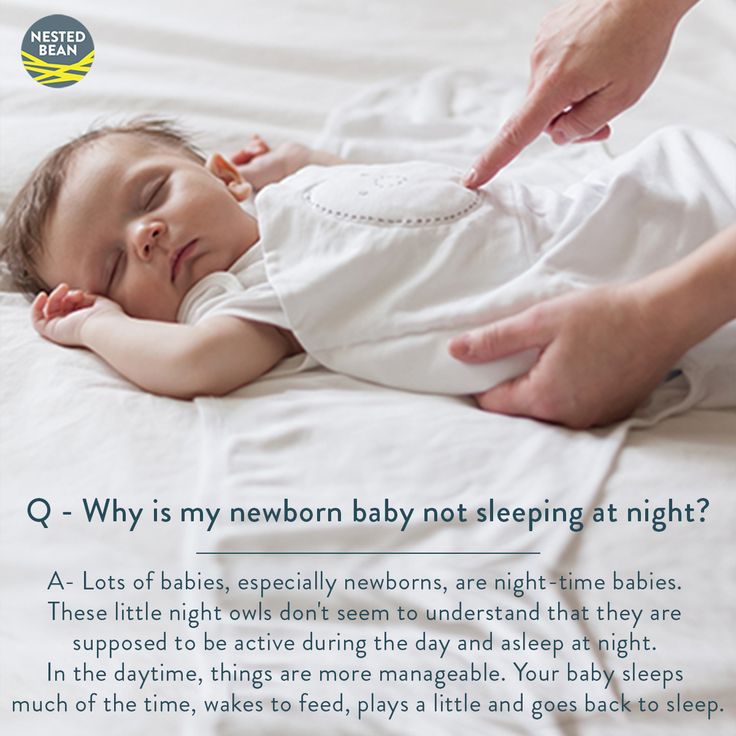 2022. When do babies sleep through the night? https://www.sleepfoundation.org/baby-sleep/when-do-babies-sleep-through-night [Accessed May 2022]
2022. When do babies sleep through the night? https://www.sleepfoundation.org/baby-sleep/when-do-babies-sleep-through-night [Accessed May 2022]
Stanford Children's Health. n.d. Infant sleep. https://www.stanfordchildrens.org/en/topic/default?id=infant-sleep-90-P02237 [Accessed May 2022]
Colleen de Bellefonds
Colleen de Bellefonds is a freelance health and lifestyle journalist. She's raising her toddler daughter and newborn son with her French husband in Paris.
When a child starts sleeping through the night
Do your children sleep very badly at night, wake up 3 to 10 times, go to bed for a long time and protest against daytime sleep? You are not alone! Studies of children's sleep and surveys of parents around the world show that about 60% of parents of children from birth to three years old experience the problem of children's sleep in one form or another. Most often, these disorders are manifested in children in long and difficult falling asleep and frequent awakenings at night.
“When will the baby start sleeping through the night without waking up? How to make sure that the baby sleeps all night, falls asleep quickly and without the active help of parents, and daytime sleep is long and of high quality? How to teach a baby to sleep at night without waking up? Almost all parents of badly sleeping children have such questions.
In response to these questions, the topic of teaching children to fall asleep on their own often comes up. Indeed, the inability to fall asleep on your own is one of the reasons for frequent awakenings at night. And children who have mastered the skill of falling asleep on their own sleep at night without waking up.
But how do you teach your child to fall asleep on their own? And will sleep training really solve all of your child's poor sleep problems day and night? In this article, we will analyze the topic of self-falling asleep in detail and you will understand what you need to do to teach your child to sleep through the night.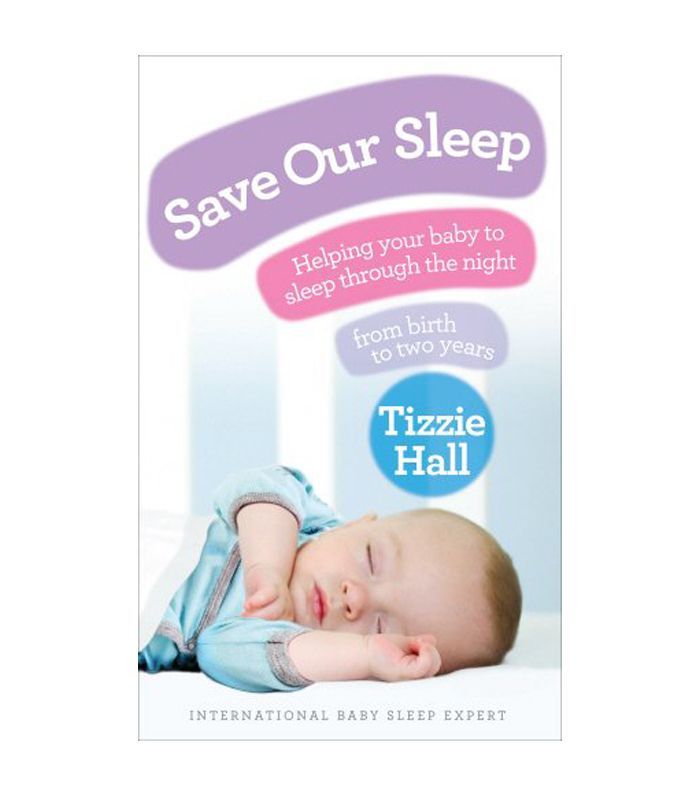
Contents:
- What is self-falling asleep?
- Why teach children to fall asleep on their own?
- When can I start learning how to fall asleep on my own?
- How to prepare your baby for learning to fall asleep on his own?
- What are the methods of teaching self-sleeping?
What is spontaneous falling asleep?
Sleeping on your own is when a child falls asleep with little or no parental help. Putting down a baby who can fall asleep on his own looks like this:
- Parents perform a ritual of preparing for sleep0018
- Laying a sleepless baby in the crib
- Kiss him
- They say "Sleep, baby"
- Turn off the lights and leave
- Baby falls asleep by himself in his crib in 10-15 minutes
- At night, the baby wakes up for feeding and immediately falls asleep
- When awakening at night between sleep cycles, the baby moves on to the next cycle on its own
This kind of bedtime may seem like a miracle to most moms and dads who put their babies to sleep for several hours with motion sickness, feedings and rise to them 10 times a night. But we can say with confidence that this is not a miracle, but a reality! Because every healthy baby can learn to fall asleep on their own, and the task of parents is to help the baby master this.
But we can say with confidence that this is not a miracle, but a reality! Because every healthy baby can learn to fall asleep on their own, and the task of parents is to help the baby master this.
Falling asleep on your own is a skill that can be taught to any healthy baby from the age of 6 months.
Just like you help your baby learn how to drink from a cup or eat with a spoon, crawl, talk, walk, you need to help your child learn how to fall asleep on his own. All toddlers can learn these skills on their own sooner or later, but with your help they will learn them faster and more effectively. Teaching your baby to fall asleep on their own is the task of parents!
Why is it important to teach your child to fall asleep on his own?
Why is it important to teach your child how to fall asleep on their own? Because the inability to fall asleep on your own is one of the reasons for frequent awakenings at night and short daytime sleeps. It's all about short-term awakenings between sleep cycles. All adults and children during a night's sleep wake up between sleep cycles (see "falling asleep - waking up" in the illustration). Only adults straighten the pillow and blanket, roll over to the other side and fall asleep again. Because adults know how to fall asleep on their own, without outside help.
And infants with brief awakenings need help getting back to sleep. When awakening at night, children need to recreate the conditions under which they fell asleep, such as motion sickness or breastfeeding. And if these conditions can only be recreated with the help of parents, then parents will have to get up and help the child fall asleep.
Children who are taught to fall asleep on their own easily cope with short-term awakenings without the help of parents and wake up only for feeding.
It is important to understand that the inability to fall asleep on your own is NOT the ONLY reason for frequent nighttime awakenings. Therefore, before starting training, it is important to understand the reasons and prepare the baby.
When can I start learning to fall asleep on my own?
Take your time to start learning. One UK study shows that learning to fall asleep on your own before 6 months of age:
- causes stress for both mum and baby
- May cause feeding problems (whether breastfed or bottle-fed)
- The effect of any early learning does not guarantee the absence of sleep problems after 6 months
We do not recommend self-sleep training for babies under 6 months of age!
But you can instill the right sleep habits almost from birth. The first and surest step to falling asleep easily on your own is to use the different ways to calm the baby , do not accustom to one method of calming. Let the child sometimes fall asleep with other family members, not only with his mother. Let your baby at least try to find his own way to calm down and fall asleep, so put your baby to bed sleepy, but awake!
VIDEO LESSON
How to Teach Falling Asleep on Your Own?
More
Which method of learning to fall asleep on your own should I choose?
In order to teach your baby to fall asleep on their own, many methods have been created. The essence of all methods is to give parents a clear algorithm of actions and help to clearly and consistently instill in the baby new associations for sleep. It is especially important to follow the algorithm for tired parents who stay up all night and often make “bad decisions” out of fatigue.
All the many existing methods of self-falling asleep can be divided into two main groups: hard methods (or Let Cry methods) and soft methods (or No Cry methods).
Hard or Let Cry methods involve rapid changes in associations to falling asleep, minimal or no parental assistance, and allow the child to cry during learning.
- In the Let Cry group of methods there are 2 main methods:
- Cry-it-out (CIO), "Cry before falling asleep", "Scream": method by Mark Weissbluth
- Time checks, Periodic Check Method, Controlled Cry Method: Method by Richard Ferber / Edouard Esteville
Despite numerous studies confirming the effectiveness and safety of rigorous sleep training methods, they are heavily criticized by professionals and parents. And the argument is the danger of prolonged weeping. Crying is the baby's only way to communicate with the outside world, and ignoring crying can harm the baby's psyche and cause attachment disorders.
Mild or No Cry methods advocate the slow and gradual replacement of sleep associations with others, with maximum parental help and parental comfort. Among the soft methods, 3 main ones stand out:
- The Shuffle, Slow Distancing Method: Kim West method, which the Sleep, Kid team represents in Russia
- Put Up - Put Down, The Hug-Put Down Method: Tracy method Hogg
- Fading: Elizabeth Paintley Method
We urge you to take the choice of teaching your baby to fall asleep on his own very seriously. Remember that prolonged crying before bed can develop into a negative association with sleep and negatively affect the child and his emotional state.
Remember that prolonged crying before bed can develop into a negative association with sleep and negatively affect the child and his emotional state.
The first task of the Sleep Baby project is the physical and psychological safety of the baby. Therefore, we adapt all the proposed methods, taking into account the views of modern psychology on the development of babies, they have been examined by child psychologists and breastfeeding specialists!
We have adapted the Kim West method to the Russian mentality and characteristics of parenthood. We made sure that the Slow Retract method is effective and has passed the test of time, it has been successfully used all over the world for more than 20 years!
Why do we think the Kim West Method is the best method possible? Because:
- Parents do not intervene where the child can cope on his own, and help where he cannot yet!
- Mom or dad stays in the room with the baby until he falls asleep.

- Adults gradually reduce the degree of their assistance until the child masters the skill. The pace of change is individual!
- You can teach your baby to fall asleep on his own both in a separate bed and when sleeping together.
- The method is complex and requires an obligatory stage of preparation!
Be sure to pay attention to our video tutorial "How to teach your baby to fall asleep on his own?" >>
What is important to do before starting the course?
The most common mistake of all parents is to start learning to fall asleep on their own without preparation. Learning to fall asleep on your own without adjusting sleep conditions, sleep patterns and habits will be ineffective! Both the baby and the mother must be ready for change.
What is important to do before starting?
- Get a "green light from a pediatrician" to make sure there are no medical reasons affecting your baby's sleep
- Adjust the sleep conditions in which the baby sleeps
- Choose a sleep and wake schedule that is comfortable for the baby
- Help the baby to get away from negative associations for falling asleep
Choose a time to start training, at least 2 weeks without moving or significant changes in your usual way of life.
It is important to remember that a mother must also be ready for learning. A tired mother who does not have the strength to change will not be able to follow the rules and respond correctly in difficult situations. Try to sleep off and find yourself an ally who can help you in learning, and in a few days you will admire your sleeping baby, and the phrase “time to sleep” will make you and your baby happy!
Frequent Awakening ConditionsSleep QualitySleep AssociationSleep
Self Falling Asleep Medical Problems and Sleep Waking TrainingSleep
Putting your baby to sleep: tips and tricks
Author, editor and medical expert - Muraeva Yulia Yurievna.
Views: 189 544
The date of the last update: 06/23/2022 G.
Average reading time: 12 minutes
9000
Content:
9000 to sleep a baby
How to help a child fall asleep
How to teach a child to sleep in his own crib?
Bedtime rituals
What are the bedtime rituals?
Sleep is an important part of life, so it must be regular and of high quality 1 . But often the first year of a child's life becomes a real test for parents. Even such a seemingly simple action as putting a newborn to sleep sometimes turns into a task of increased complexity.
But often the first year of a child's life becomes a real test for parents. Even such a seemingly simple action as putting a newborn to sleep sometimes turns into a task of increased complexity.
The difficulty is that in infants, sleep is still being formed, and circadian rhythms differ from those to which parents are accustomed 2 .
Rhythms of baby sleep
Before birth, the alternation of sleep phases in the fetus is subject to circadian (daily) rhythms and fluctuations in the hormonal background of the expectant mother. After childbirth, time is needed for the child to mature its own regulatory system 2 .
A full-term newborn sleeps an average of 16-17 hours 2 , and the total duration of sleep is not affected by dark and daylight hours 3 .
Babies up to 2 months have 2 sleep phases 2.3 :
- Active sleep. Starts after falling asleep. This phase is important for the stimulation and development of the central nervous system.
 During active sleep, you can observe the baby's mobility, rapid eye movements and a weakening of reactions to external stimuli (light, sound, touch).
During active sleep, you can observe the baby's mobility, rapid eye movements and a weakening of reactions to external stimuli (light, sound, touch). - Peaceful sleep. Follows the active phase. During restful sleep, the heart rate slows down, the movements of the eyeballs stop, and the baby stops moving his arms and legs.
Together these 2 phases form a cycle. Each cycle begins with active sleep followed by restful sleep. The duration of such a cycle is approximately 45-60 minutes 3 .
But the sleep-wake cycle lasts longer. For breastfed babies, it is approximately 1-3 hours, and for "artificial" children, it is 2-5 hours 3 .
Gradually the periods of wakefulness lengthen, and most of the sleep occurs at night 2 :
- By the end of 3 months of life, an uninterrupted night's sleep can be about 5 hours 3 .
- From 2 to 12 months, babies sleep 9-10 hours at night 3 , while daytime sleep is divided into 1-4 episodes that can last from 30 minutes to 2 hours 3 .

Sleep regularity and sleep disturbances can be assessed after 6 months, when the child develops circadian rhythms 3 .
Although the night sleep becomes longer, each cycle is still accompanied by micro-awakenings (wakings) 2.3 , after which the baby can fall asleep quickly enough. This is a short-term activation of the central nervous system, which must be distinguished from a complete awakening 2 . It is good if at this moment the mother is nearby and helps the child fall asleep again.
Back to Contents
How to Put Your Baby to Sleep
The American Pediatrics Association has developed guidelines for safe sleep for babies. Below are some of them (the full list of recommendations can be found at the link) 4 :
- The best sleeping position is on your back.
- The mattress should be hard enough, and the crib should not be cluttered with things, blankets, pillows.

- No smoking in the nursery.
- If the child sleeps in a cool room, it is better to dress him warmly or put him in a special sleeping bag for babies. He should be warm, but not hot, so it is not recommended to wrap him with a blanket. And in order for the baby to breathe freely, in no case cover him with a blanket with his head.
Babies up to 12 months still need night feeds, so sleeping in the same room with the mother may be necessary to optimize breastfeeding and closer contact 4 . Co-sleeping in the same room with parents does not mean that the child will sleep with them in the same bed, because it does not meet the safety requirements 4 .
Before putting your newborn to bed, also remember that:0260 4 . There are babies who find this soothing, but swaddling can interfere with the baby's breathing because the chest is compressed and the baby cannot take a deep breath 4 . Tight swaddling also increases the risk of a lung infection and can aggravate hip dysplasia. Do not swaddle a baby who is already rolling over from his back to his stomach 4 .
Do not swaddle a baby who is already rolling over from his back to his stomach 4 .
Back to content
How to help your baby fall asleep
As the baby develops, fears, anxiety, restlessness may appear when he refuses to sleep separately from his parents and resists falling asleep 2 . The maturation of biological rhythms is facilitated by the environment of the child, the behavior of parents, compliance with the regimen and rules of sleep hygiene 3 .
To ensure quality rest and proper development, parents need to follow the recommendations. Specialists advise following these rules 4 :
- Put the baby to bed in the evening and wake up in the morning at about the same time, despite weekends and holidays 4 .
- Avoid physical activity before bed 4 .
- Limit activities in bed that are not related to falling asleep (playing, feeding), as this disrupts the baby's understanding of sleep 4 .
- Keep the bedroom comfortable - moderate temperature, low lighting, minimal noise, comfortable pajamas 4 .
- Form a laying ritual 5 .
- Follow the diet - the baby should not be hungry or overeating. Before going to bed, you can feed him a little 5 .
- Keep an activity diary so that you can analyze and understand what interferes with your child's sleep 4 .
Back to Contents
How can I get my baby to sleep in his own crib?
There are various methods to help a child fall asleep on their own, without the help of their parents.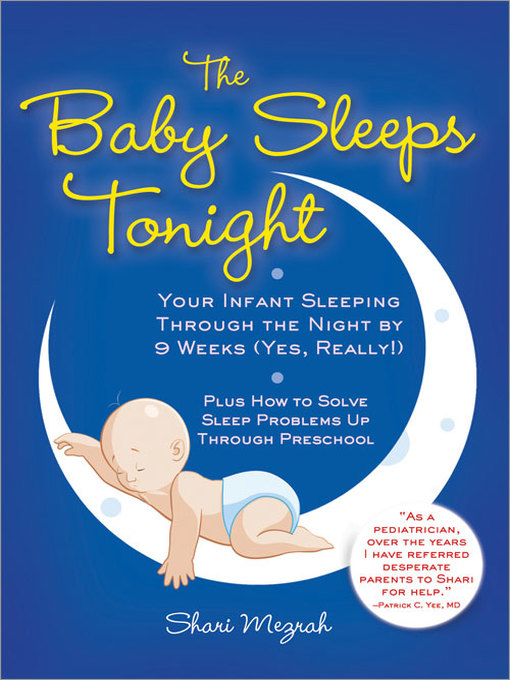 They are often used as a non-drug treatment for insomnia (sleep disturbance) in young children aged 1 to 3 years 4 . Examples of such techniques are described below. Choosing the right one for your baby should be discussed with a baby sleep specialist.
They are often used as a non-drug treatment for insomnia (sleep disturbance) in young children aged 1 to 3 years 4 . Examples of such techniques are described below. Choosing the right one for your baby should be discussed with a baby sleep specialist.
One way to overcome sleep disorders is through behavioral therapy. It helps to change wrong associations and sleep patterns in a child 4.7 . In behavioral therapy, the abandonment method is used. With him, parents immediately leave the child in the crib and leave the nursery. However, they do not return when they hear his cries or call, giving him the opportunity to fall asleep on his own 4 . But psychologists do not recommend using this approach if the baby is not yet 6 months old and is breastfeeding 4 , as this may adversely affect the baby's condition.
In addition, the abandonment method is not suitable for all parents. For those wishing to be near or to calm a crying baby 4 experts recommend other methods - "check and hold" or "gradual repayment" 4. 7 .
7 .
Up to Table of Contents
"Checking and Holding"
When getting ready for bed, the parent spends some time with the child, then puts him to bed and leaves the room or goes to bed if she is in the nursery. At the same time, they do not approach the baby for 15-20 minutes and do not react to his crying or screaming. This period is called "hold" 7
When the allotted 20 minutes are up, the parent goes to the child, straightens his bed and returns to himself. This part is called checking 7 .
It is very important not to take him out of the crib and feed him when he wakes up. The exception is children who require night feedings for age or medical reasons. In all other cases, the parent simply comes to the crib for a short time to check, and then leaves again for a 15-20 minute “hold” 7 .
Gradually - over several nights - increase the "hold" interval to 30 minutes 7 .
Up to content
Gradual repayment
This technique is designed to “repay” the child's protests and manipulations 7 . There are 2 options for "gradual repayment" - with and without the presence of a parent 4 .
There are 2 options for "gradual repayment" - with and without the presence of a parent 4 .
The classic option is to leave the baby alone in the bedroom for a certain amount of time, gradually accustoming him to fall asleep on his own. Unlike the “check and hold” method, the child can be calmed down. But you need to return to his bed not at the first call, but after a certain time. After the child calms down, you need to leave again, increasing the intervals when he tries to fall asleep without you 7 . This option is suitable for babies over 6 months old 4 .
Until the age of six months, use the “gradual repayment” method in the presence of a parent. It is carried out in stages 4 :
- The parent puts the baby to bed, and sits next to it. If the bed is large, you can lie down next to the child.
- On subsequent nights, mom or dad still stays with the baby, but gradually reduces the number of touches, communicates less with him, showing him that they are busy with something, for example, reading or cleaning the room.

- When putting the child to bed, the parent does not lie down next to him, but sits on a chair not far from the bed, about 5 meters from it, continuing to sit until the baby falls asleep.
- In the next step, the distance between the bed and the chair is increased, gradually moving it away.
- A little later, you can leave the nursery for a while, but be sure to return before the baby cries.
If the child wakes up, repeat the same steps that you perform at this stage of the procedure. The stages can be stretched over several days so that the baby has time to get used to each 4 .
Up to content
Bedding rituals
Forming a bedding ritual is considered an effective method 4 . It can complement the "repayment" technique, but sometimes it works quite well on its own. Suitable for all ages, but the earlier it is started, the less likely babies are to develop sleep problems - they fall asleep faster and sleep longer 4 .
The ritual begins at the moment of the child's drowsiness. Before you put the baby to sleep, you need to perform a number of actions. They should be predictable, regular, relaxing and positive. The total duration of the ritual is 20-45 minutes 4 . If it was not possible to meet the set time, most likely, you need to shift the ritual to another time and wait for drowsiness. It can manifest itself as loss of interest in surrounding toys and people, reddening of the eyelids, rubbing of the eyes, yawning 4 .
Back to Contents
What are the rituals for falling asleep?
Experts recommend preparing for sleep, which consists of consecutive, daily repeated actions, the so-called routines 5 . They help speed up falling asleep, increase the quality and duration of sleep, reduce the number of night awakenings 5 .
The most typical nightly rituals 6 :
- Bathing in warm water with your favorite foam or bath product, light massage.

- Soothing sounds - "white noise". This is a monotonous noise that does not carry a semantic load, soothes and helps to forget, for example, flowing water, a metronome, ticking clocks or recordings of nature sounds.
- Lullabies and fairy tales.
- Wishes for "good night", "sweet dreams" or other phrases that are said only before going to bed.
Sleep experts recommend a three-step ritual that includes bathing, massage and quiet time in the crib 8 .
- Bath foam can be used during bathing. For babies from 6 months, JOHNSON’S ® Baby Bath Foam "Before Bed" is suitable. It has a soothing scent to help your baby get ready for bed 8 .
- Immediately after a warm bath, a milk can be applied to the skin, such as JOHNSON’S ® Bedtime Milk Milk 8 , for children over 6 months of age, by lightly stroking the skin. Such a massage will calm the baby even more and prepare him for sleep, especially thanks to the pleasant smell of milk 8 .

- At the third stage, you need to change the child into pajamas, read a bedtime story or sing a lullaby 4,8 .
As a rule, a few days are enough to form an association between the evening routine and falling asleep 4 .
As you can see, pediatricians and psychologists have developed various methods for healthy children's sleep and fast falling asleep. But you need to use them, taking into account the age of the child, his habits and characteristics of the nervous system. The task of parents is to organize the baby’s daily routine and prepare him for sleep, calming and creating positive associations with the process of falling asleep. With the correct implementation of the recommendations of a specialist, the child will gradually learn to fall asleep independently and faster, will sleep longer and sounder.
You may also be interested in:
Traveling with your baby
Baby's Skin Care Guide
Back to Contents
The information in this article is for guidance only and does not replace professional medical advice. For diagnosis and treatment, contact a qualified specialist.
For diagnosis and treatment, contact a qualified specialist.
References:
- E.S. Sakharova. What worries the baby? Pediatric pharmacology, 2010, volume 7, No. 2, pp. 143-148.
- I.A.Kelmanson. Formation of the state of sleep in ontogeny and the problems arising from this. Neurology and psychiatry. Special issue "Sleep and its disorders-5". Effective pharmacotherapy, 2017, No. 35, p.4-13
- M.G.Poluektov, P.V.pchelina. Sleep in children: from physiology to pathology. Medical Council, 2017, No. 9, pp. 98-103.
- P.V.Pchelina. M.G.Poluektov. How to treat insomnia in early childhood. Neurology and psychiatry. Special issue "Sleep and its disorders-4". Effective pharmacotherapy, 2016, No. 19, pp.52-60.
- Jodi A. Mindell, PhD; Lorena S. Telofski, BA; Benjamin Wiegand, PhD; Ellen S. Kurtz, PhD. A Nightly Bedtime Routine: Impact on Sleep in Young Children and Maternal Mood. (The Nightly Sleep Schedule: Effects on Young Children's Sleep and Maternal Mood) SLEEP (Sleep), Vol.
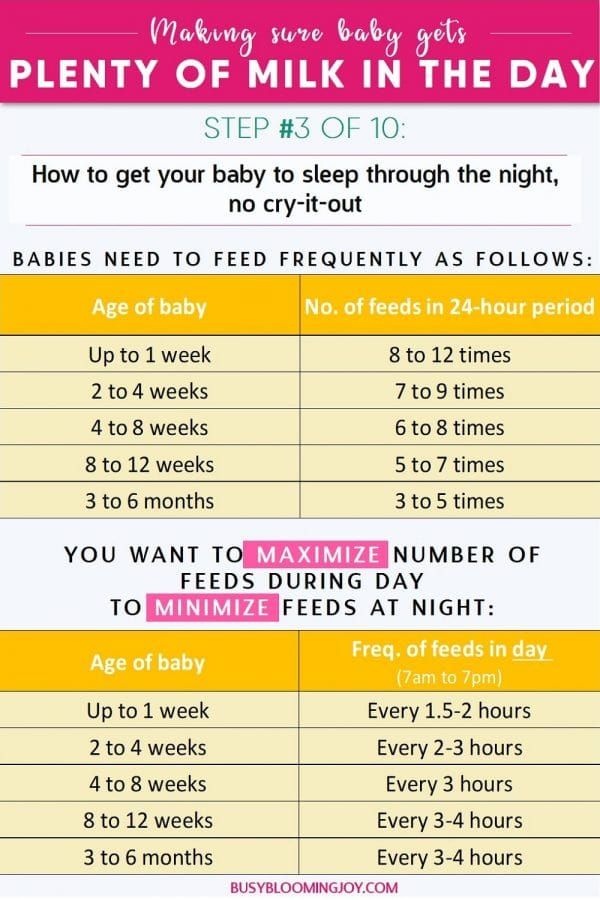
Learn more





